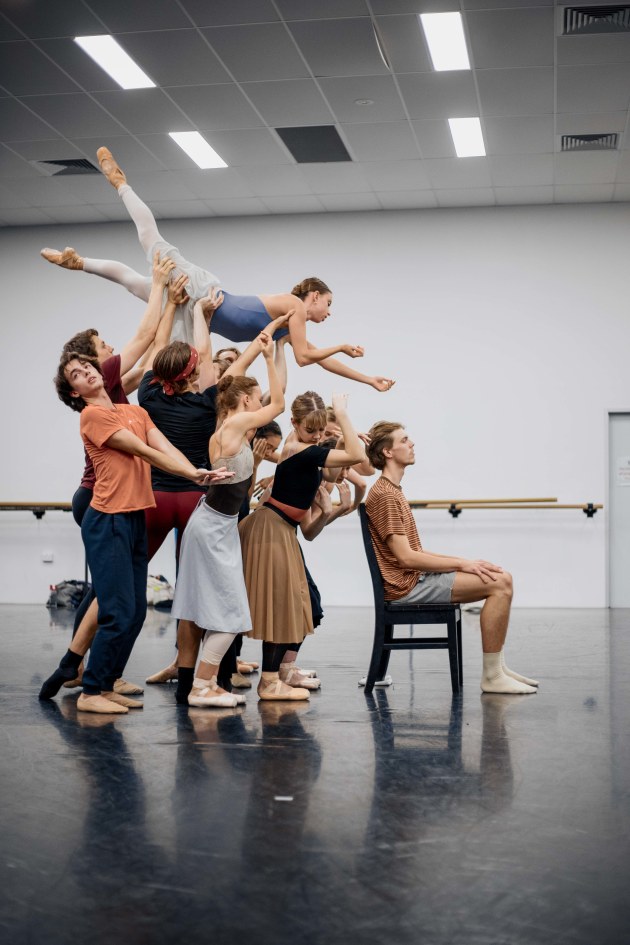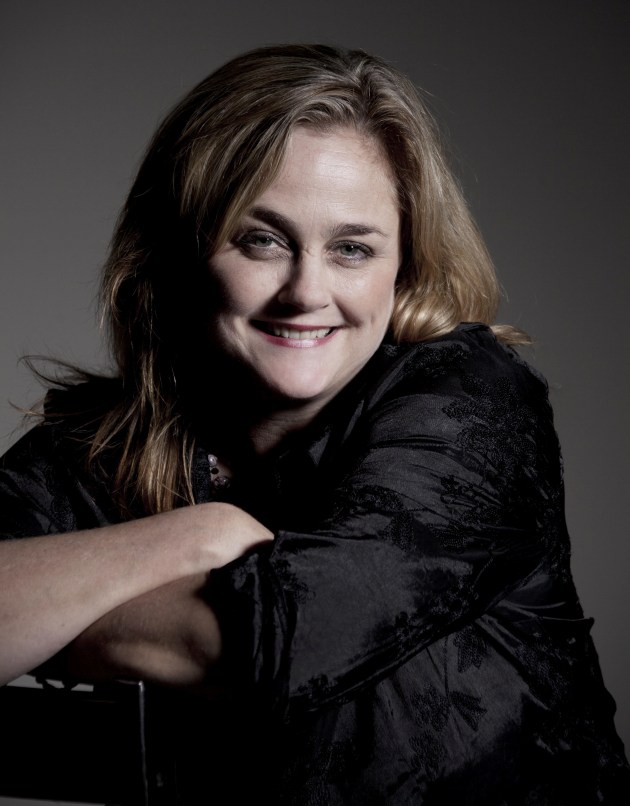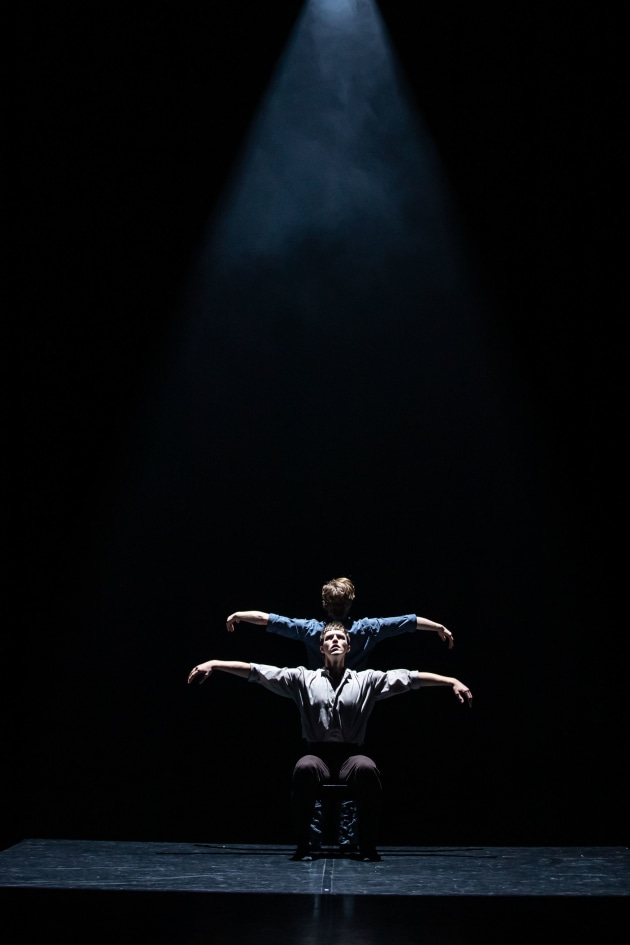The Natalie Weir Way
Matthew Lawrence marvels at the quiet and gentle style of this esteemed choreographer.

One of my first memories of Natalie Weir is from 25 years past, chatting with us young dancers at the affectionately named watering-hole, Aunty Sue’s, opposite the Australian Ballet’s headquarters on Kavanagh Street in Melbourne. Weir was young too, a Queensland girl from Townsville: friendly, softly spoken, down-to-earth, enjoyed a pint. She was refreshingly normal and easy-going for a choreographer, and prodigiously talented.
Dark Lullaby was the piece being created, her first commission as resident choreographer of the Australian Ballet. It was a visually striking piece inspired by Goya’s etchings. It is one of over 150 pieces choreographed by Weir (she admits she has lost count!), created on a range of international and local dance companies, as diverse as the American Ballet Theatre to Expressions Dance Company (now Australasian Dance Collective), where she was artistic director for 11 years. Shooting forward to the present, in her current position as a Queensland Ballet (QB) resident choreographer, Weir is now re-working her piece, Fallen, which QB’s Jette Parker Young Artists will be taking to London’s hallowed Royal Opera House in June this year.
There are parallels between Dark Lullaby and Fallen. Both are abstract pieces, which look to suggest but not prescribe meaning. Similarly, each piece has a male protagonist who is struggling with the weight of loss. In Fallen, based on Wilhelm Müller’s poetic lyrics from Schubert’s Winterreise, the man – affectionately referred to in rehearsal as “Isaak”, after its original cast member, Isaak Mclean – has lost his love, and treks through snow and moonlit darkness to free himself of memories and grief. His moon-shadow acts as his only companion.

Weir admits that, throughout her creations, she has been “obsessed with duality”, and the theme of “what is presented outside is not necessarily what is inside”. Fallen’s moon-shadow is played by another male dancer, who replicates then leads at various times. Weir suggests the shadow represents an inner strength and alludes to moments of the man picking himself up. This is shown in the intricately formed duets between the two male leads, which surge in waves of mirrored movement.
Creating intricate and technically demanding partnering sequences has been synonymous with all of Weir’s pieces. Within her partnering sequences there are phrases of simplicity, followed by multiple sequences of visual wizardry. The trio in Fallen, between the red-dressed lost love, the man, and his shadow, demonstrates this adroitly. At various times it is unclear how the lifts and positions are being made, like ballet’s fish-dive illusion – “Look mum no hands!” – the man and his shadow continually and seamlessly swap partnering duties, creating a most magical effect of who is doing what and how?
There is no choreographic textbook on how to achieve this. Weir admits that, in her formative years, she worked on routines for cheer-leader squads. Not something she has kept on her CV, but the early groundwork of understanding advanced partnering pyrotechnics from formulating group lift sequences no doubt helped in forming a technical know-how. However, her real mastery is in how she prompts involvement and ownership from the dancers:
“Show me that lift again?”
“Ok, good. It’s a lovely position, but can I see what happens if you twist your body snake-like around the man’s back?”
“Good, now relax your neck and let your arms just float.”
“Can you twist more?”
“Ahh, that’s it. Really beautiful, dancers!”

Weir calls this process “tuning into them, so that they will tune into me”. Modern businesses, in which collaboration has become a buzz word, could certainly benefit from viewing how Weir artfully moulds involvement. She reflects: “In the early days, I would come in almost too prepared, with everything mapped out. It took me a while to trust the studio process of being open and not stuck in something.” On creating steps, she humbly says, “Dancers bring far more ideas than I can bring.”
Considering how complex Weir’s choreography is, her creative process is incredibly fast. For instance, a complex four-minute trio section was created in a brief afternoon session. And the bones of Fallen – a 24 minute-piece – took around 10 afternoon sessions. It reminds me of how Stephen King talked about his writing process in his instructional book, On Writing, where he encourages the reader not to get stuck on over-planning or analysing – just write. King is famously quoted on how he writes as just “one word at a time”. Weir, likewise, keeps the process simple and moving at pace. If she senses the dancer getting stuck on a phrase, she will move on and revisit at a later stage.
Central to Fallen is the use of the group dancers, who perform phrases of swooping diagonals, followed by structured patterns, in synchronicity, then through movement canons, creating unpredictable ebb and flow, while adding another emotional layer. As she likes to remind the dancers: “You are like a Greek chorus lamenting the predicament of the poor man.” At the heart of Weir’s choreography is her ability to allow the process to evolve naturally, but then always relating the movement back to the theme. She refers to this creative process as “letting it go, then drawing it back”. Likewise with the creation of steps, there is always an inherent Natalie Weir movement signature: of hiding preparations, showing tension then release, and the relaxation of arms and neck.
It would be remiss of me not to also reflect on how Weir produces her work on stage. Burgeoning choreographers, learning their craft, need look no further than her simple yet strategically crafted staging of Fallen. There are no lasers or 300 light cues, just a succinct assortment of specials – a lighting state which emanates from a single source – and gobos – a lighting effect which washes the stage in various patterns. Each lighting state follows or confines the movement, enhancing the narrative and helping the viewer navigate the action.

Over the years, I have been privileged to sit in front row seats at many creative processes. Every choreographer chooses different paths to generate the dance and ideas which flavour their pieces; some are more directorial, while others like to drip and flick like Jackson Pollock and see where the paint falls. Natalie Weir’s process, with 30 years of experience, now seems almost effortless. She is collaborative, and looks to create a positive, encouraging studio environment, where the dancer feels ownership. She asks the dancer to create technical wow, and emotional connection, in the gentlest of fashions. It is distinctly the “Natalie Weir Way”.
Matthew Lawrence is a former principal artist with the Australian Ballet, Birmingham Royal Ballet and Queensland Ballet. He is currently Ballet Master at the Queensland Ballet.
This article was first published in the July/August/September issue of Dance Australia. Did you miss it? Subscribe now and never miss an issue!


